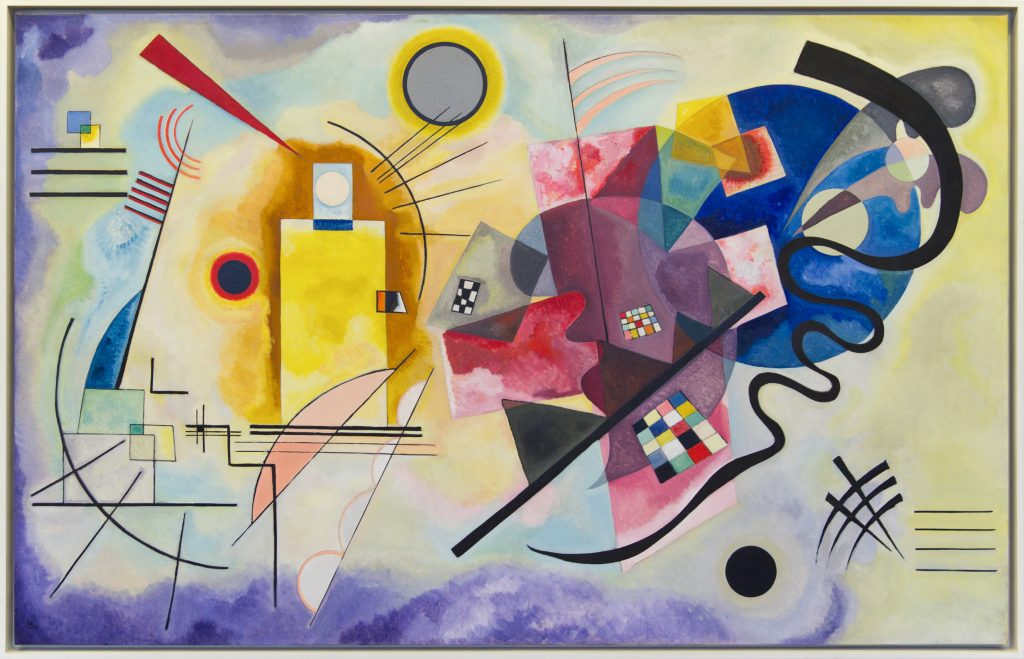Yellow Red Blue
Wassily Kandinsky‘s “Yellow Red Blue” is a masterpiece of abstract fine art, painted in 1925. The piece is characterized by its bold use of color and geometric shapes, as well as its emphasis on the emotional and spiritual power of abstract art.
The painting is divided into three large, flat, rectangular blocks of color, each of which is delineated by a thick, black border. The yellow, red, and blue rectangles are placed one on top of the other, creating a sense of balance and harmony. The colors are vivid and intense, with a sense of energy and movement that animates the painting.
One of the most notable aspects of “Yellow, Red, Blue” is the way that Kandinsky uses geometric shapes to create a sense of order and structure. The rectangles are carefully arranged to create a sense of balance and harmony, and the thick, black borders add to the overall sense of solidity and stability.
Another notable aspect of the painting is the way that it emphasizes the emotional and spiritual power of abstract art. Kandinsky believed that abstract art had the ability to convey a sense of deep emotion and spirituality, and that it was capable of transcending the limitations of representational art. The bold, vivid colors of “Yellow, Red, Blue” are a testament to this belief, as they convey a sense of energy and vitality that is not tied to any particular subject or object.
The painting has been interpreted in many different ways over the years. Some see it as a celebration of the purity and simplicity of abstract art, while others see it as a reflection of Kandinsky’s spiritual and philosophical beliefs. Still, others see it as a commentary on the political and social upheavals of the time, with the bright, bold colors standing in stark contrast to the dark, tumultuous world outside.
In conclusion, “Yellow, Red, Blue” is a masterpiece of abstract art, notable for its bold use of color, geometric shapes, and emotional and spiritual power. The painting is a testament to Kandinsky’s belief in the transformative power of abstract art, and it continues to fascinate and inspire new generations of artists and art lovers to this day.

